What is the Origin and History of the MICE Industry Worldwide

Colombia-MICE is part of the Pelecanus Travel Group, a leading travel operator in Colombia . We are located in Bogota, Colombia. We specialize in corporate travel and all services around Meetings, Incentives, Conferences, and Exhibitions.

Origin of the MICE industry
Although there is not much information on the history of this sector, the first historical approach or origin of the MICE industry in Europe took place in 1814 when the Congress of Vienna was celebrated, as well as many other meetings on political, religious and cultural issues.
However, much of the story begins in 1841. That year, Thomas Cook, a famous British businessman, organized transportation for 540 people to the annual Temperance Convention Association.
This achievement is considered the first organized voyage, and while it did not bring great commercial success, Cook recognized that such activity represented potential future benefits. So years later he decided to set up a travel agency called Thomas Cook & Son, which is considered to be the first travel agency in history.
What is the history of the MICE industry?
Early approaches for the mice industry.
The beginnings of the meetings industry, or as it is now known, the MICE industry, lie in Europe and North America.
Throughout the 19th century, many institutions, particularly universities, had a growing need to exchange information with other academic organizations, paving the way for numerous meetings.
At the same time, thanks to the development of the railways, the hotel industry benefited from the high demand from travelers, which made it necessary to build hotels in the major railway stations.
On the other hand, as far as incentive trips are concerned, at the end of the century some companies saw the need to stimulate their employees in order to achieve greater motivation, which would increase the company’s production and profitability. This is how incentive trips came about.
The first incentive trip was in the United States in 1910 by the National Cash Register Company of Danton. Agents and distributors attended and were rewarded with a free trip to New York for their excellent results, applications, and job performance.
Over the years all kinds of events related to product promotion, annual board meetings and expert gatherings have become more and more obvious. At the beginning of the 20th century, more and more events and participants were included in the industry, so better training was introduced for those involved in the organization, especially those who worked in sales, which was the most important area.
The birth of the MICE industry
Based on the information you found in the Origin of the MICE Industry section, other key moments in history are considered to be the beginning of the industry.
As cities increasingly recognized the value and economic and social benefits of hosting meetings, a group of entrepreneurs decided, for the first time in history, to hire a vendor to recruit and host meetings across multiple industries for their city of Detroit, Michigan. In 1896 the first Convention Bureau was established in the United States. So this is the year he thinks the industry was officially born.
How was the MICE industry affected by the world wars?
Due to the influence of the world wars and their aftermath, there were very few congresses and conferences in the period from 1914 to the end of 1945, so the industry did not develop particularly well during this period.
From the 1950s, the industry experienced a boom, largely due to the accelerated growth of multinational companies and agencies, and the need for topical training for companies and their employees.
Post-war MICE industry
After World War II, tourism in general underwent an incredible transformation and became a mass phenomenon, largely due to the development of commercial aviation, which prompted investors to give the industry a major boost.
Since the 1960s there has been increasing investment in infrastructure to support conventions, conventions, meetings, and events around the world.
Some such infrastructures in Europe were the Sheffield Arena, the National Arena, and the Wales Millennium Center in the UK. On the other hand, the Convention Bureau of Belgium created the first Convention Bureau on the continent.
Infrastructure investments were also made in North America, Australia, and Africa (particularly South Africa). The Sava Centar in Belgrade, the largest congress and business center in the region, was built in 1977 and has a capacity of about 4,000 people.
These types of investments continue to be made today, as most of them are economically and socially significant and offer their countries the opportunity to position themselves on the map of top MICE destinations.
The most important associations of the MICE industry
Apart from the historical facts that mark the development of this tourism industry, the creation of professional associations in this field also contributes to its history.
Below are some of the most important associations in the MICE industry and the year they were founded:
1928 — International Association for Exhibitions and Events (IAEE)
1957 — Professional Association for Convention Management (PCMA)
1958 — International Association of Conference Centers (AIPC)
1963 — International Congress and Convention Society (ICCA)
1964 — European Association of Conference Cities (EFCT)
1968 — International Association of Professional Convention Organizers (IAPCO)
1969 — British Association of Conference Venues (BACD)
1972 — International Conference (MPI)
1975 — Meetings and Events Australia (MEA)
1981 — Association of British Professional Conference Organizers (ABPCO)
1990 — Association of the Meetings Industry (MIA)
With the growing number of events and conventions taking place throughout the year around the world, we hope this overview of the history of the MICE industry will help put its importance into perspective. If you have any questions or are looking for a MICE destination in Colombia for you or your company, please contact us, we will be happy to help you.
Related Post
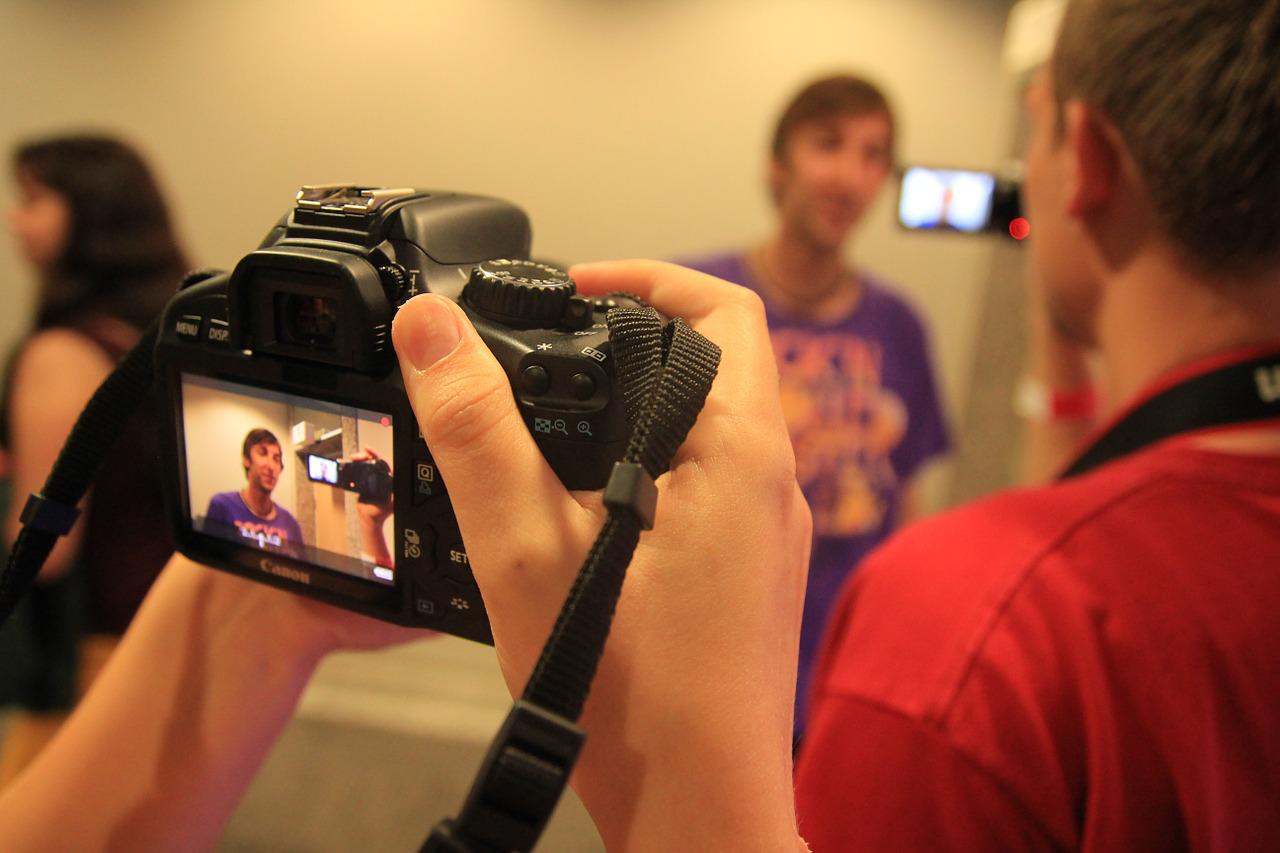
¿Cómo Organizar el Mejor Evento Híbrido?
Colombia-MICE es parte del Grupo Pelecanus Travel. Estamos ubicados en Bogotá, Colombia. Somos especialistas en viajes corporativos y todos los […]

9 Increíbles Razones para Usar la Tecnología en la Industria MICE

Todo lo que Debes Saber para Ser El Mejor Ponente

What is MICE Tourism?
Benefits, challenges and examples | 2024.
Are you ready to hear about the exciting world of MICE? it's all about bringing people together to network, learn, and have a great time! And the best part? You get to travel to all kinds of cool destinations around the world, from sunny beaches to bustling cities. So pack your bags, grab your business cards, and get ready to MICE it up!
What is MICE Tourism ?
MICE tourism , an acronym for Meetings , Incentives , Conventions & Exhibitions , has become a key driver of economic growth and happiness around the world. This vibrant sector, which encompasses everything from corporate meetings and incentive travel to conventions and exhibitions, not only boosts local economies but also creates memorable experiences for participants.
A Destination Management Company (DMC) is usually the firm that specializes in providing services to clients in the travel and MICE tourism industry.
In this article, we will explore the fascinating world of MICE tourism and discover how this dynamic sector can benefit cities, businesses, and individuals.
MICE tourism refers to a specific segment of tourism that focuses on organizing events for specific groups, such as:
- Corporate meetings: Events that bring together employees, clients, or partners to share information, collaborate, and strengthen relationships.
- Incentive travel: Reward trips offered to employees or clients for their high performance or specific achievements.
- Conventions: Large-scale gatherings of professionals from a specific industry or association to share knowledge, network, and develop new ideas.
- Exhibitions: Events that showcase products, services, and technologies to a target audience of potential buyers, distributors, and industry professionals.
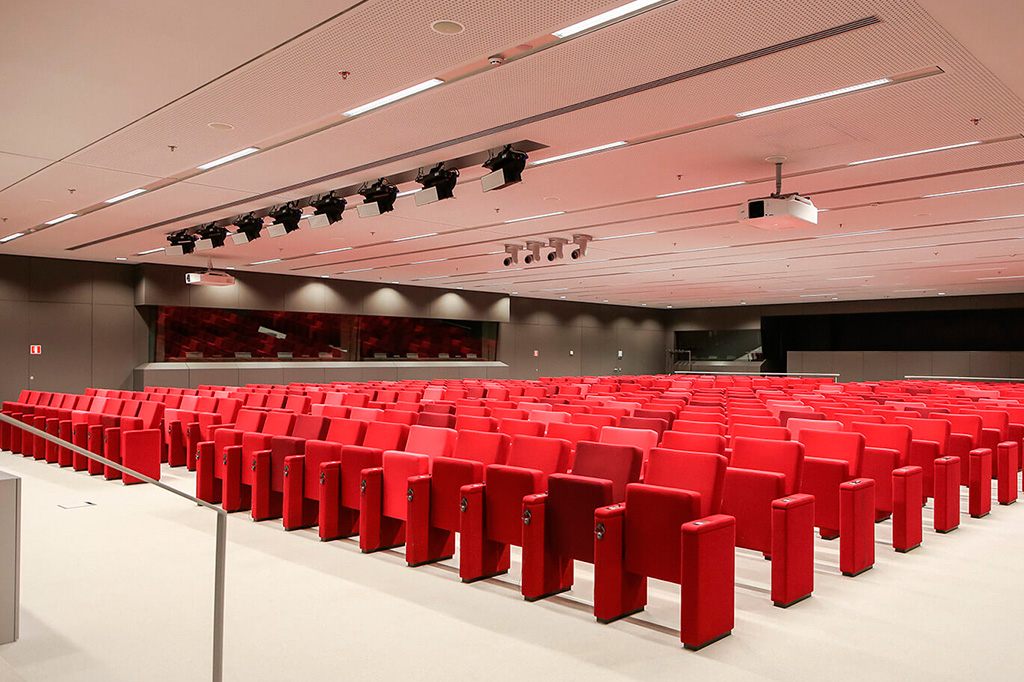
The Different Types of MICE Tourism
Conferences, exhibitions.
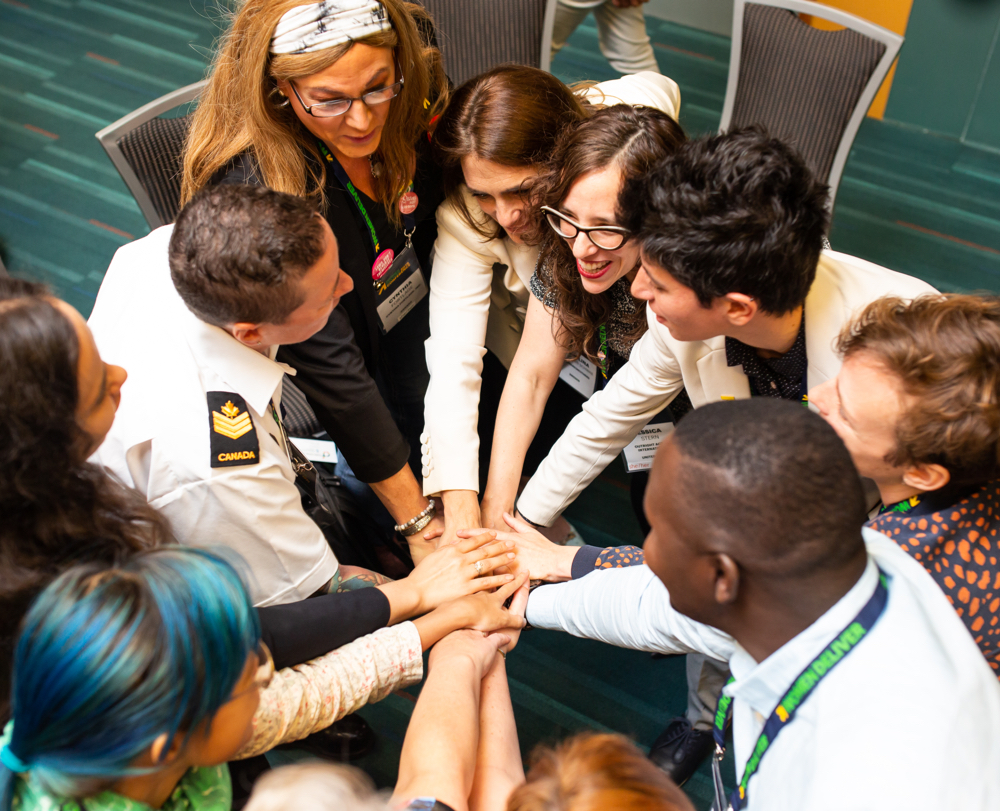
The Benefits of MICE Tourism
MICE tourism offers a wide range of benefits for various stakeholders, including cities, businesses, and individuals. Here is a closer look at the key benefits:
For cities:
- Economic impact: MICE tourism generates significant revenue through direct and indirect spending, contributing to local economic growth and prosperity.
- Job creation: The MICE industry creates jobs in various sectors, including hospitality, transportation, event planning, and construction, leading to increased employment opportunities.
- Destination promotion: MICE events showcase cities to a global audience, promoting their attractions, infrastructure, and hospitality offerings, and attracting visitors and investment.
- Infrastructure development: Hosting MICE events can incentivize cities to invest in infrastructure development, such as improved transportation networks, convention centers, and hotels, benefiting both residents and visitors.
- Social and cultural benefits: MICE events can foster cultural exchange, promote social cohesion, and enhance the city’s image and reputation.
For businesses:
- Brand awareness and reputation: MICE events provide a platform to showcase brands, products, and services to a targeted audience, increasing brand awareness and enhancing reputation.
- Lead generation and sales: MICE events offer valuable opportunities to generate leads, connect with potential clients, and boost sales.
- Customer relationship management: MICE events provide a platform to strengthen relationships with existing customers, build loyalty, and enhance customer satisfaction.
- Employee motivation and retention: Incentive travel programs and corporate events can motivate employees, improve morale, and increase employee retention.
- Knowledge sharing and networking: MICE events facilitate knowledge sharing, collaboration, and networking among industry professionals, leading to innovation and business growth.
For individuals:
- Professional development: MICE events offer opportunities for professional development, learning, and skill enhancement through workshops, conferences, and seminars.
- Networking and career opportunities: MICE events provide valuable networking opportunities, allowing individuals to connect with peers, mentors, and potential employers, leading to career advancement.
- Personal enrichment and cultural experiences: MICE events offer unique experiences, cultural immersion, and opportunities to explore new destinations, broadening horizons and enriching personal lives.
- Memorable experiences: MICE events provide participants with memorable experiences, fostering positive memories and promoting a sense of community and belonging.
Overall, MICE tourism plays a vital role in promoting economic growth, job creation, destination promotion, and knowledge sharing. It offers a multitude of benefits for cities, businesses, and individuals, contributing to a vibrant and sustainable tourism industry.
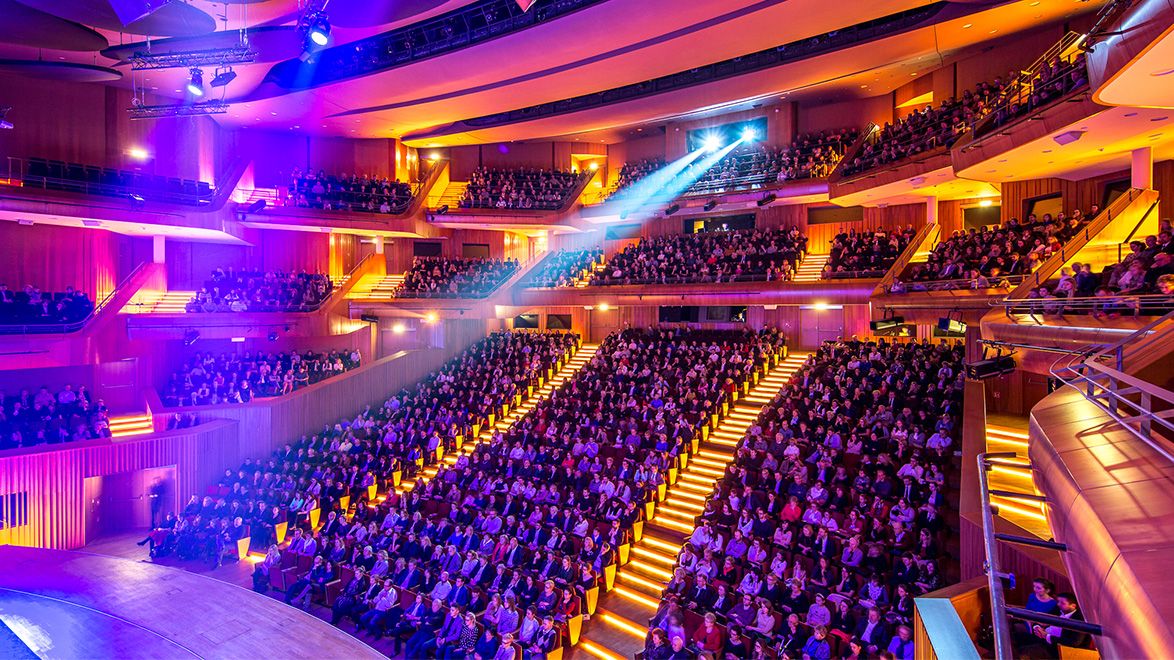
The Challenges of MICE Tourism
MICE tourism , while offering numerous benefits, also presents various challenges that need to be effectively addressed for sustainable growth and success. Here are some key challenges:
1. High costs: Organizing and hosting MICE events can be expensive, involving venue rental, catering, transportation, accommodation, and other logistical costs. This can be a barrier for smaller businesses and organizations with limited budgets .
2. Competition: The MICE industry is highly competitive, with destinations and businesses vying for a share of the market. This requires effective marketing and branding strategies to differentiate and attract participants.
3. Economic and political factors: Economic downturns, political instability, and safety concerns can impact the MICE industry, leading to cancellations or reduced participation.
4. Seasonality: The demand for MICE events can be seasonal, with certain periods experiencing higher demand and others experiencing lower demand. This can create challenges for businesses and destinations in terms of resource allocation and staff scheduling.
5. Sustainability: The MICE industry can have a significant environmental impact, and there is a growing demand for sustainable practices. This includes reducing waste, energy consumption, and carbon emissions, and adopting eco-friendly practices throughout the event planning and execution process.
6. Technological advancements: The rapid evolution of technology requires MICE organizers to constantly adapt and adopt new technologies to enhance the event experience and stay competitive. This can involve integrating virtual reality, augmented reality, artificial intelligence, and other innovative technologies into events.
7. Changing customer expectations: Participants in MICE events increasingly expect personalized experiences, customized content, and seamless integration of technology. Meeting these expectations requires flexibility, innovation, and a focus on customer satisfaction.
8. Risk management: MICE events involve various risks, such as cancellations, accidents, and security breaches. Effective risk management strategies are essential to mitigate potential losses and ensure the safety and security of participants.
9. Human resource challenges: The MICE industry requires skilled professionals with expertise in event planning, management, marketing, and logistics. Attracting and retaining qualified talent can be a challenge, especially in competitive markets.
10. Data and analytics: Collecting and analyzing data on participant behavior, preferences, and trends can help MICE organizers make informed decisions, improve event planning, and optimize the overall experience. However, data privacy and security concerns need to be addressed.
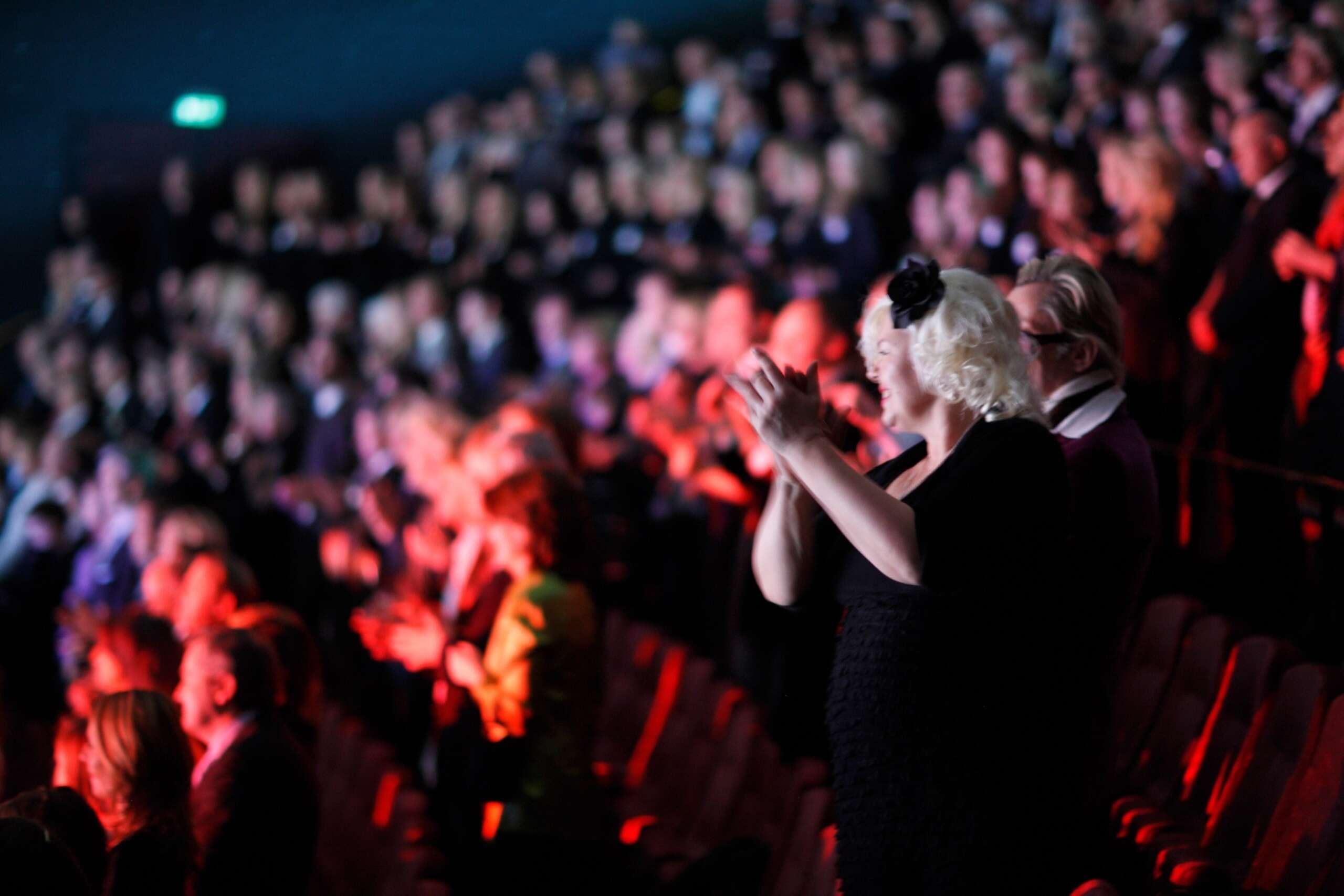
The Top MICE Tourism destinations
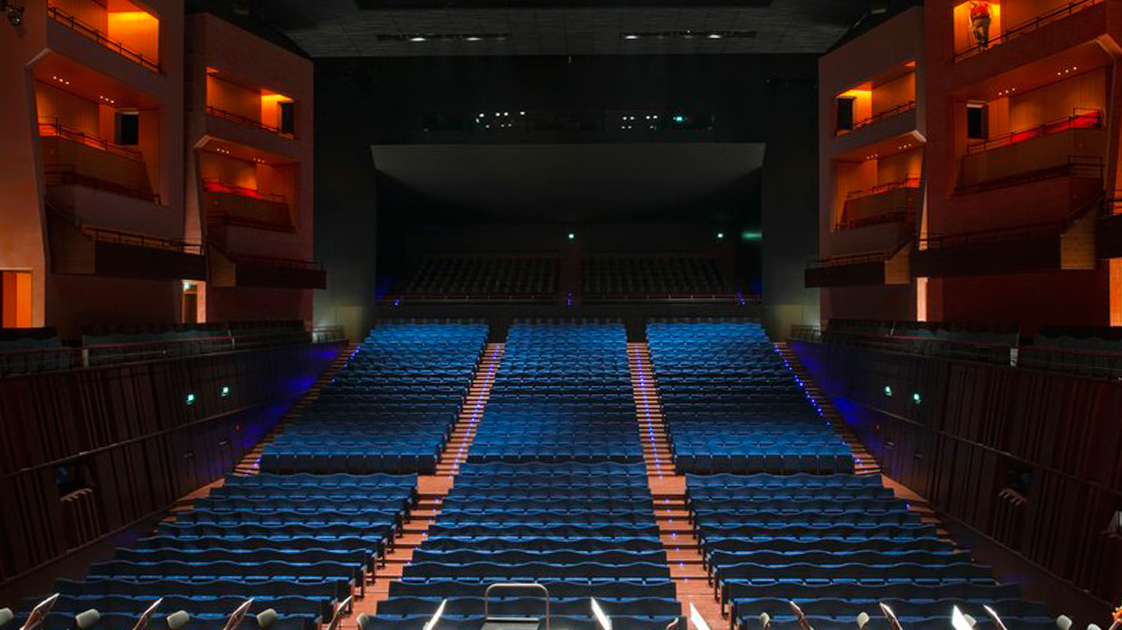
Latest Trends in MICE Tourism
Key factors for successful mice tourism events.
Organizing a successful MICE tourism event requires meticulous planning and execution, catering to the specific needs and expectations of participants. Here are some key factors to ensure a positive outcome:
1. Defining clear objectives:
- Set SMART goals: Clearly define the event’s purpose, target audience, desired outcomes, and desired return on investment (ROI) using the SMART framework (Specific, Measurable, Achievable, Relevant, and Time-bound).
- Align goals with stakeholders: Ensure that the event’s objectives align with the interests and needs of all stakeholders, including organizers, participants, sponsors, and the host destination.
2. Selecting the right destination and venue:
- Accessibility and infrastructure: Choose a location that is easily accessible for participants, with convenient transportation options and appropriate infrastructure, including accommodation, meeting spaces, and technology capabilities.
- Alignment with event theme: Consider how the destination and venue complement the event’s theme and overall experience.
- Cost-effectiveness: Evaluate the costs associated with the location and venue and ensure they align with the budget.
3. Engaging content and programming:
- Tailored content: Develop engaging and informative presentations, workshops, and activities that cater to the specific interests and needs of the target audience.
- Interactive elements: Incorporate interactive elements throughout the event to keep participants engaged and facilitate networking opportunities.
- Innovation and creativity: Consider incorporating innovative and creative elements to keep the event fresh and memorable.
4. Seamless logistics and organization:
- Detailed planning and communication: Develop a comprehensive timeline and plan, considering all logistical aspects like transportation, accommodation, catering, and technology. Communicate effectively with all stakeholders throughout the planning process.
- Contingency planning: Anticipate potential challenges and develop contingency plans to address them effectively.
- Professional team: Assemble a team of experienced and qualified professionals to handle various aspects of the event planning and execution.
5. Excellent customer service:
- Attentive and proactive service: Ensure participants feel valued and supported throughout the event. Provide attentive and proactive customer service, addressing their needs promptly and efficiently.
- Feedback mechanisms: Implement feedback mechanisms to gather participant feedback to continuously improve the event experience.
All about DMCs
Destination management company, event venues, what are event venues how to choose the right one, mice events, don't miss our new mice events section.
The website aimed exclusively at the MICE industry with a carefully selected range of MICE destinations, venues and events.
www.micemag.com [email protected]

- Privacy Overview
- Strictly Necessary Cookies
This website uses cookies so that we can provide you with the best user experience possible. Cookie information is stored in your browser and performs functions such as recognising you when you return to our website and helping our team to understand which sections of the website you find most interesting and useful.
You can find more information about our privacy policy here: Privacy Policy
Strictly Necessary Cookie should be enabled at all times so that we can save your preferences for cookie settings.
If you disable this cookie, we will not be able to save your preferences. This means that every time you visit this website you will need to enable or disable cookies again.
July 5, 2019
Views: 64657
The complete platform for all your events
Posted on july 5, 2019, mice tourism: the ultimate guide to understanding and meeting the needs of business travelers., mice tourism acronym stands for meeting , incentive travel, conferences and exhibitions ..
The acronym MICE is a general term for the events industry itself. Despite involving different sizes and complexities, all of these event types got one thing in common. They’re all strongly related to business travel . Today, there are several webinars on business travels that highlights the features of MICE tourism and how you can leverage on them
Globally, this industry alone generated more than US$ 1 trillion worldwide in 2017. By 2025, this amount it is predicted to grow to an outstanding US$ 1,5 trillion mark. In addition, according to the same research, Incentive Travel is the modality experiencing the highest peak in the next months or even years.
What is MICE Tourism ?
The MICE Industry can be broken down into four big groups. Those groups sum up what the meetings industry is and, in general, have a similar overall purpose. Still, they have slight differences among themselves.
1. Meetings
- Business meetings could be anything from director-only board annual general meetings to a training seminar . Basically, any group of people gathering in a common location, for a common reason, is a type of meeting. Other examples include: strategic planning , shareholders meeting , management meetings , etc.
2. Incentives
- Incentives are a way to motivate or reward associates, dealers or any employee of a company, according to their previous performance or as a way to build teamwork. As the context of travel varies, they can count with advisory of local convention bureaus of the targeted destinations. According to a survey done by The Incentive Search Foundation , Incentive Travel is a fundamental corporate culture builder. Some results about it’s effect include: 54% of respondent corporate buyers reported that they budget for it increased from 2017 to 2018. Resort retreats , annual summits and familiarization tours or even a day trip are common examples. Therefore, both the hospitality industry, as well as the tourism industry benefit directly from this kind of event.
3. Conferencing
- Corporate conferences usually gather a group of people by profession or personal interest in a specific field, looking for information exchange and discussion about a certain topic. These conventions require complex planning and itinerary organization well in advance. They differ from meetings mainly because of scale. A corporate or government conference / convention can have hundreds of participatory meetings happening simultaneously inside it as part of a program. Annual gatherings of industry associations and organizations are a big component of this sector.
4. Exhibitions
- Exhibitions are also known for their extensive planning. They usually are highly produced trade shows that bring products to their audience. Financial, Pharma, Beauty, Insurance, High-tech and other lead industries populate the largest exhibition centers with senior executives. They could be either businesses selling to other businesses (B2B) or straight to the final consumer (B2C). Larger fairs , despite having a clear target, might combine both modalities in the mix.
As MICE event has a limited duration, it can boost the economy of a whole city, country or region. Major international congresses exponentially increase hotel occupation and service consumption of local services. Thus, MICE events are considered one of the main solutions for the seasonality of destinations. There are so many opportunities in the meetings industry, that it might even become the main economic activity of a country.
Travel companies like Wowfare can help businesses plan and book MICE events, ensuring that all aspects of the trip are taken care of.
Besides, one needs to go out there and explore. MICE travelers are often keen to try a stay-cation . That means, after attending to a corporate event, visitors and participants can dedicate some time to get to know more about the place and it’s attractions.
Tourism or Events Industry?
Firstly, buyers of MICE travelers usually are professional associations or corporations. Looking at that, it’s easy to understand that MICE is a strong and inseparable intersection of the Tourism and Events industry. Large groups always traveled on business.
Secondly, in modern times, DMO’s (Destination Marketing Organizations) and DMC’s (Destination Management Companies) proved the power of MICE tourism. Through the last decades, they generated long-term economic growth and development to their destinations. Look at Singapore, for instance. It is continuously cited in the 1st position of Meeting City ranking of Union of International Associations (UIA) . It’s calculated that over 800 conventions take place in the city-state every year. In other words, that represents 8.5% of all the top international events in the planet.
In conclusion, MICE business model thrive by keeping up to date with corporate and entrepreneur tendencies. And that also includes selecting appealing destinations. For instance: cities like Orlando , Florida (FL) and Chicago , Illinois (IL) are ready to hold over 200 corporate conferences every year .
If we talk about Europe, research reports say that the beautiful and charming cities of Germany, for instance, generate an annual turnover of 290 billion Euros . In Spain, it generated 178 billion Euros in 2018, representing 14,6% of the country’s GDP . It’s an incredible growth rate that brought Spain to the Top 10 tourism market economies in the world, with China, Japan, Hong Kong, USA, France, Italy, India, Germany and United Kingdom. So it means that the events segment is bringing development, money and structure to theses venues, businesses, governments, etc.
Looking from inside: what experts in the field say.
“I have no forecast to work in any other industry” , says Paula Lewis, Marcomm professional that organized events to brands such as Visit Florida and Choose Chicago.
That pretty much sums up how professionals in the field are in love with what they do. “The order here is: this industry is relationship driven. So it’s about understanding what makes people make decisions and with which frequency, what brings them happiness and what motivates them. Their psychological psyche makes MICE industry a perfect place to continue to grow personally and professionally ,” she continues.
After all, we can say the meeting and the tourism industries are walking entirely hand-in-hand . They ignite and model each other in a cycle that, when successful, can transform places. Because of that, businesses are increasingly incorporating experiences to their marketing strategy. But who are these traveler and what they look for? Many countries now use an electronic visa system, i.e. e-visa . Thanks to this, you do not have to carry the documents,and do everything almost automatically and remotely,which in the end will allow you to travel without restrictions almost all over the world. To streamline this process, services like VisaFly provide efficient and convenient e-visa solutions for hassle-free travel planning.
Reasons why MICE professionals and brand delegates love live events
It is a must to maintain an updated network of contacts and good relationships you your peers. And corporate events are excellent opportunities to meet experienced MICE professionals, visitorsand o ther MICE delegates. Creating connections, learning and keeping up with best international standards are a vital part of this industry.
Brand awareness
Corporate events strengthen the positioning of companies and increase their power within the market in which they operate. In other words, social gatherings, parties, conferences and celebrations are responsible for showing the public that business is going well. Leading associations, such as Meeting Professionals International (MPI), take these opportunities to show off their best workforce and how they have a vibrant community.
It is worth mentioning that the projects that are well positioned, are more likely to approach and retain customers, as they are well regarded by the public. It means that, in addition to notoriety for the market itself, the company also stands out before the competition and gains credibility with potential customers.
Professional development
The corporate events work on the development of the professionals already working in the company, through lectures, congresses and training opportunities.
The great advantage is in the technical improvement of employees, who can use their knowledge to improve production processes.
The development of professional skills also occurs when the company launches a new work organization, or proposes different management methods.
Thus, instead of tiring training, the event can be the ideal environment to communicate something, in a friendly way, about the work of employees.
Encourage teams and co-workers
Lack of motivation is one of the problems that most affects companies in Brazil. In addition to compromising productivity, demotivation also has negative consequences for the employee, such as increased stress, Burnout syndrome and even depressive conditions.
Therefore, corporate events can function as a motivating action, especially when aligned to meet the wishes of employees.
It is important to listen to what employees have to say, as they feel valued and, consequently, improve productivity.
Who are MICE travelers and what they look for.
“ MICE is a very particular type of tourism. It’s probably the most customer-centric industry ,” states Tracy Fuller, President of InnovativEvents and Event Heroes. She completes: “And to understand the client’s needs, you need to interpret beyond what they say.”
MICE events are useful for a no number of occasions. Let’s say: a company that spies their competitors must be present to the events where they’ll be. Not spying in an illegal way. It’s a compromise of keeping up with the latest trends and not staying left behind.
Another example of frequent MICE traveler is the solo expert that is going to prospect clients for their consultation services. These visitors are clearly attending to events to execute this particular activity. Thus, creating the possibility of exchange of information among this number of people is fundamental. Each one of these agents need to be in mind when planning incentive trips. Also, with Arangrant’s help, businesses can optimize their offerings and provide business travelers with a seamless and rewarding MICE tourism experience.
Sometimes, reasons people gather can also be Ideology. After all, what could be better for our ego than finding people who think like us? We, human beings, tend to look for belonging and a sense of community. So that can also be considered an Incentive Travel or a Meeting, as these participants are after a specific objective.
Above all, the secret to be highlighted here is: who’s the client? For the Event Planner, DMC, PCO, or Live Marketing Agency, the customer is a corporation or association in the pursue of having a successful event organized. For the event itself, the customer to take in consideration is the larger audience, composed by the attendees and visitors.
Audience types
In a general way, a good beginning is to clearly know how these travelers differ from leisure tourists.
MICE travelers also usually spend 17.5% more than leisure tourists . That includes expenses on lodging, hotel booking, food & beverage, facilities, air tickets and ground transportation to and from the congress they’ll attend. But as well, their demands and expectations might also be one level higher.
Key takeaways
Incentive travel, whether they’re large events or exclusive meetings, involve a lot of prior arrangement. So it can increase the value, predictable satisfaction and revenue for clients, agencies, suppliers, vendors and destinations.
Usually, we’re speaking about decision-makers here. However, don’t take it for granted. When planning a MICE, aim to start from the beginning, asking yourself the 5 W’s and the 2 H’s first:
- 5 W´s: What, to Whom, Why, Where and When.
- 2 H´s: How? How much ?
These are the most fundamental questions for common problem solving you’ll need to sort out when you start planning any MICE event . That’s the only way to reach goals, meet expectations and build up real, branded, rich and memorable experiences.
And whether you’re planning to break in the industry or are a experienced professional, there are also great resources on professional trade organizations and associations websites, such as IAPCO – International Association of Professional Congress Organizers . They have tons of updated info to help event pros and students to keep up to date
Did you like this content?
Don’t forget to check these other essential checklists to master event planning skills:
- 7 ways to market your event for free.
- How to choose a keynote speaker for your corporate event.
- Three steps to enhance your marketing strategy with recurrent events.
About the Author / InEvent
You might also like, 2 responses to : mice tourism: the ultimate guide to understanding and meeting the needs of business travelers..
This guide on MICE tourism is mind-blowing. It breaks down complex concepts into easy-to-understand. It’s like a friend guiding you through the world of business travel. A must-read for anyone in the industry.
I’m thrilled to hear you found our guide on MICE tourism so helpful and easy to understand. We aimed to demystify the intricacies of the industry and provide valuable insights for professionals like you. It’s wonderful to know it resonated with you in such a meaningful way. Thank you for your kind words and for recommending our guide to others in the industry. If there are any specific topics or areas within MICE tourism you’d like us to explore further, please don’t hesitate to let us know. We’re here to support your journey in the world of business travel.
Comments are closed.
- Case Studies
- Event Registration
- Hospitality
- Get in touch
- Certification
- Partnerships
- Integrations
- System Status
- Hospitality Industry
What is MICE? (Meetings, incentives, conferences & exhibitions)

August 20, 2020 •
3 min reading
Putting the nice into MICE
Nothing to do with pest control, everything to do with business-minded travel. Put simply, MICE stands for Meetings, Incentives, Conferences & Exhibitions. It is business tourism at its finest, aimed at bringing together top professionals from every sector in an enhanced, tailor-made hospitality setting.
What is MICE?
Meetings are typically held in hotel conference rooms or at convention centers. They are single-day events that bring together a group of professionals to address a key challenge or set goals for the organization.
Incentives are travel rewards a company may provide in return for excellent professional performance from individual employees, groups or partners. A few days in a resort, hotel or popular hospitality venue at your company’s expense does wonders for employee loyalty.
Conferences
Conferences take meetings to the next level and are designed for a large corporate group to share knowledge across several days. They often include not only key members of the organization, but also guest speakers and the general public.
Exhibitions
Exhibitions are essentially trade shows where an organization promotes its key products and services to the public. They are hyper-focused events that drum up business and help employees to network and build lasting professional relationships.
MICE services: Revenue implications
Implementing tailor-made MICE services into a hotel infrastructure is a way of securing additional long-term valuable growth. The latest Convention Industry Council report claimed that 85% of meetings in the U.S. are conducted at venues with lodging, generating more than 275 million room nights annually. The expenditure of MICE travelers is much higher than leisure travelers, with profitable customers coming from the world of IT, banking, pharmaceuticals, retail and hospitality.
In brief, hotel meetings and corporate events are great way to boost revenue and secure those extra bookings. Lastly, developing MICE services is the perfect opportunity to enhance a hotel’s reputation and profile, besides its profitability.
MICE: Required skills
The expertise required to excel in MICE tourist management is based on interpersonal, creative, organizational and technical skills. Innovative creativity is needed to design original event concepts, select the right venues and market effectively. The strong practical component must include technical know-how ranging from audio-visual dexterity to accessing fast-track visa apps. Soft skills such as patience, empathy, teamwork and problem-solving are vital if, for example, a large traveling party from a culturally-specific region are to be greeted with the appropriate welcome drink.
This niche hospitality market has seen hotels having to create jobs for innovative meeting planners and professional conference services staff, as well as develop industry-specific programs to add new dimensions to their overall service infrastructure. In some cases, recruiting in-house can prove difficult if all competencies are to be met, hence the rise in Destination Management Companies (DMC) that have started to spring up worldwide.
A DMC aims to offer the full range logistic services in their specialist destinations: meet & greet, transfers & transportation, hotel accommodation, restaurants, activities, excursions, conference venues, themed events and gala dinners. They are often able to provide preferential rates based on the buying power that they have with their preferred suppliers.

MICE: Global events
A number of global events focus on MICE travel, especially the incentive niche, many of which are organized by Questex Travel Group (formerly MEET). Of the annual events, these are some of the most prominent in the industry around the world:
- Global Meeting & Incentive Travel Exchange (GMITE): Formerly known as Incentive Travel Exchange (ITE).
- Latin America Meeting & Incentive Travel Exchange (LAMITE): Working to connect business opportunities in Latin America.
- Caribbean Meeting & Incentive Travel Exchange (CMITE): The island version of the ITE.

Keep reading

Hospitality management careers list for hotel enthusiasts
May 07, 2024

How Airbnb and short-term rentals reshape rural and urban communities
May 02, 2024

What does a Hotel Manager do?
This is a title
This is a text
- Bachelor Degree in Hospitality
- Pre-University Courses
- Master’s Degrees & MBA Programs
- Executive Education
- Online Courses
- Swiss Professional Diplomas
- Culinary Certificates & Courses
- Fees & Scholarships
- Bachelor in Hospitality Admissions
- EHL Campus Lausanne
- EHL Campus (Singapore)
- EHL Campus Passugg
- Host an Event at EHL
- Contact our program advisors
- Join our Open Days
- Meet EHL Representatives Worldwide
- Chat with our students
- Why Study Hospitality?
- Careers in Hospitality
- Awards & Rankings
- EHL Network of Excellence
- Career Development Resources
- EHL Hospitality Business School
- Route de Berne 301 1000 Lausanne 25 Switzerland
- Accreditations & Memberships
- Privacy Policy
- Legal Terms
© 2024 EHL Holding SA, Switzerland. All rights reserved.

MICE tourism: A simple explanation
Disclaimer: Some posts on Tourism Teacher may contain affiliate links. If you appreciate this content, you can show your support by making a purchase through these links or by buying me a coffee . Thank you for your support!
Mice tourism is a prominent part of the tourism industry, yet many people have no idea what MICE means! Well, in this article I am going to change that! Read on to learn what mice tourism is, how the MICE tourism industry has grown worldwide and why this type of tourism is so important!
Conferences
Exhibitions, the growth of mice tourism, why is mice tourism important, industry players in the mice tourism sector, the future for mice tourism, mice tourism: further reading, what is mice tourism.
MICE tourism is a part of the business tourism industry. It encompasses four niche areas, which are:
- Incentive travel
As you can see, MICE is actually an acronym used to group together the four tourism types mentioned above- contrary to popular belief, it has nothing to do with rodents!
MICE tourism is typically tourism provision that is planned in advance and designed for large groups of people for particular purposes. Leong (2007) defines MICE as ‘a type of tourism where groups of participants are gathered to achieve certain purposes.
Below, I have provided an explanation of each component of MICE:

Mice tourism includes any types of travel for the purpose of a meeting(s). This ranges from small meeting to large meetings. Meetings can be short in duration (e.g. last a couple of hours) or long (e.g. a week or more). Types of meetings include (but are not limited to):
- Board meetings
- Focus groups
- Training seminars
- Strategy planning
- Shareholder meetings
- Management meetings
Traditionally, meetings have been predominantly face-to-face, however recent years have seen a big shift towards virtual meetings, which was accelerated by the COVID pandemic and subsequent and rapid move to digital means around the world. This will likely result in the continued decrease of travel for the purpose of meetings in the coming years.

Incentive travel refers to travel that intends to motivate or reward company stakeholders. There are different types of incentive travel, including:
- Familiarisation trips
- Teambuilding trips
- Reward trips
Research has demonstrated that incentive travel is an important corporate culture builder. If you are looking for a way to motivate your staff and enhance productivity, retention and output throughout your business, then incentive travel is often a worthwhile investment.

A conference is an event that facilitates presentation, discussion and the showcasing of work within a professional network. Conferences are often important networking events and have been a prominent part of the business tourism industry to date.
Conferences can last a day or a week or more, depending on the structure and purpose. People have historically travelled great distances for the purposes of conferences, particularly in the travel and tourism sector.
Examples of travel and tourism related conferences include:
- Association for Tourism and Leisure Education and Research annual conference
- TBEX conferences for travel creators
- Sustainable tourism conference
Whilst COVID saw conference organisers adapt and move online during the pandemic, there will always remain a space for physical conferences. There is no replacement for the face-to-face networking opportunities that occur during conferences, thus physical conferences will be here to stay, although perhaps to a lesser scale. Many conferences may move towards a hybrid approach of online and physical attendance.

Exhibitions provide an opportunity for businesses to showcase their products or services. They are often in the form of trade shows.
Exhibitions will often include stalls, breakout rooms, discussion points, presentations and opportunities for networking. Exhibitions are often large events involving large amounts of people.
Popular exhibitions in the travel and tourism industry include:
- Travel Adventure Show
- World Travel Market
- Women in Travel Summit
MICE tourism has grown considerably in recent years. This growth has been particularly prominent in Asia, where tourism in countries such as China and India have increased significantly.
There have been more conferences organised and more exhibitions in recent years than ever before. This is in part due to a growing population worldwide. It is also because our world has become more interconnected and globalised , thus requiring more meetings, conferences and other events that require international travel.
MICE tourism can be beneficial to a destination’s economy. It also provides a wealth of opportunities for individual companies or organisations who want to put themselves on the international stage.
Other benefits ion MICE tourism include:
- It facilitates the access to new technology
- It attracts high-spending visitors
- It provides high yield and return per capita
- It enhances the international economic contact
- It creates more economic multiplier effect and competitiveness
- It can enhance off-peak tourism
MICE tourists often stay longer and spend more money than other tourists, making them important tourism stakeholders. MICE tourism can also help to contribute to community building, urban renewal, and growth of the national identity (Getz, 2008). Furthermore, MICE tourism can encourage development in a destination, particularly in the areas of convention and exhibition centers, improvements of airports and other transport infrastructure and various urban renewal schemes.
MICE tourism is a multifaceted industry, involving a number of tourism stakeholders . This includes:
- Transport providers (international and domestic)
- Accommodation providers
- Those who provide pre- and post-conference tour opportunities
- Staff at specific venues – purpose built centres and hotels
- Professional conference and exhibition organisers and catering services
- Social program leaders for delegates and participants
- Specialised technical support such as audiovisual services
The variety of stakeholders involved in MICE tourism indicates the potentially wide ranging economic impacts of MICE tourism. It also provides rationale for support from government agencies in many countries. It also indicates the scope of the challenges which must be met in coordinating the activities of different stakeholders to ensure that the MICE tourism industry is sustainable and effectively managed.
The MICE industry size was valued at $805 billion in 2017 and was expected to grow at a CAGR of 7.6% to reach $1,439.3 billion by 2025. However, COVID has had a drastic impact on this and this growth is expected to slow or even decline as a result.
MICE tourism is here to stay, but much of it has/will continue to move online, meaning that the monetary value is significantly reduced.
The continuing MICE tourism industry growth (whether physically or online) shall have a positive impact in the growth of businesses, cities and destinations around the world.

As I mentioned before, globalisation has played a huge role in the growth of the MICE tourism industry and it is anticipated that this will continue well into the future. Exactly how the MICE tourism industry may look in the future is not exactly clear, however.
If you enjoyed this article, you may also be interested in:
- Business tourism explained: What, why and where
- Workation explained: What it means and how it works
- The most attractive countries offering the digital nomad visa
Liked this article? Click to share!

The sunniest days of your life # Vive CostadelSol
The evolution of mice tourism: how is the sector set to change.
September 19, 2022

Costa del Sol
Tags: MICE
The MICE sector is currently passing through a period of reactivation , which is having a positive effect on the tourist industry and related players. As we discussed in a previous post, in recent years MICE tourism has been evolving, offering different types of formats that increasingly shine the spotlight on technology , seek to do away with seasons and provide greater safety to travellers. Beyond these factors, the evolution of MICE tourism in Spain has revolved around a number of other trends, which we will be taking a look at in this post. Discover what MICE tourism looks like today and the challenges it will face in the future.
Why is MICE tourism so important for destinations?
MICE tourism is highly beneficial for a destination’s economy as it offers companies and organisations looking to attract clients from around the world a wide range of opportunities . MICE tourism draws in tourists with high spending power that are willing to pay more to make sure their needs and desires are met. What’s more, increasing numbers of MICE tourists include leisure activities in their itineraries, combining business and pleasure in one trip, a phenomenon that is known as ‘blesiure’. This gives tourist operators like DMCs and service companies the opportunity to develop tourist experiences for this market.

The evolution of MICE tourism in the Costa del Sol
In the wake of a challenging few years, MICE tourism is finally seeing its circumstances change. According to a report by Spain Convention Bureau and Braintrust (2022), the industry could reach 100% of its pre-pandemic activity in 2024 . In 2019, the MICE industry in Spain reached 12.314 million euros. In 2020, this dropped by 75% and in 2021 we saw a gradual recovery to the figure of 5.079 million euros. The aforementioned report states that in the second quarter of 2022, we will be able to see a rise in activity . In the Costa del Sol, experts believe that the sector will fully recover in 2023.
The biggest growth is forecast in the pharmaceutical and food sectors . Though travel restrictions and bureaucracy have meant that incentive trips have recovered more slowly, the same cannot be said for MICE travel. The pharmaceutical sector has reported the highest growth in the industry, closely followed by food and drinks. Tourist reservations in Spain grew by 320% in the first quarter of 2022 , mostly thanks to trade fairs and events.
The Costa del Sol represents huge potential for the MICE sector . Event tourism has great strategic value for the destination as this type of travel mostly occurs at times of the year where tourists traditionally wouldn’t be visiting. Indeed, during the six months of March, April, May, September, October and November, 80% of events in the Costa del Sol take place.

Four trends that will define the future of the sector
1.digitisation, boundless possibilities.
The power of technology is becoming increasingly evident across all sectors of the economy. Tourism is no different, and the conference sector even less so. This type of travel is more demanding and requires high levels of professionalism, with companies often playing an important role (not only as service providers, but also as consumers), meaning that technology is key :
- For marketing events.
- For promoting conferences.
- For managing and coordinating conferences.
- For the safety of events in general.
2. Sustainability, a goal for all
The evolution of the MICE sector cannot be explained without sustainability . Integrating sustainable processes – those that seek to be viable for resources – into events, trade fairs and tourism management in general not only represents a challenge, but also a draw and driver for change. The Costa del Sol is doing exactly that.
3. Partnerships and collaborations, towards “mixed governance”
The conference and event industry in the Costa del Sol (which has become a leading destination in this area) in particular has great potential for collaboration. One of the foundations of the sector’s future is the opportunity to build partnerships and collaborations that further boost the economy . Promoting relationships among sectors is a must if we are to generate more wealth and improve perspectives for incentive trips . As such, initiatives that seek to strengthen relationships between countries to host conferences, as well as among companies and institutions within a destination will be of great importance over the coming years.

4. Flexibility and security, driving change
Within the context of the expansion of the MICE sector in recent years (with the exception of the pandemic), flexibility is one of the most consistent explanations for the rise. The sector has seen formats diversify in the last two years with hybrid, in person and online conferences - which put health and safety in the forefront - being one of the most notable changes in the sector. From virtual trade fairs to virtual cafés, holograms and motivational videos, everything goes in this new era.

So now you have a better idea about how the evolution of MICE tourism is looking, it seems undeniable that conference tourism has a great future ahead of it. The Costa del Sol has one of the best sector forecasts in the whole of Spain. So how about checking out the conference and event venues in Malaga and other destinations ?

Search in our blog
- There are no suggestions because the search field is empty.
All about the Costa del Sol in your inbox
Submit your email address and receive exclusive information and great offers about the Costa del Sol.

Related posts
- Noruego Blog
- Finlandés Blog
Síguenos en redes sociales

UN Tourism | Bringing the world closer
- Asia and the Pacific
- MICE Industry – An Asia-Pacific Perspective

In Asia and the Pacific, one of the fastest developing regions in the world, MICE industry development can be a key driver of economic growth, regional cooperation and intellectual development. This publication brings together the theoretical background of MICE tourism as well as best practice examples from around the Asia Pacific Region. Together these show how MICE tourism can bring benefits beyond profits and short term jobs to include adding competitive advantage to destinations, diversifying source markets and engaging both hosts and guests in global, regional and local issues.
share this content
- Share this article on facebook
- Share this article on twitter
- Share this article on linkedin
Related Content
Unwto asia pacific newsletter 46 issue, unwto tourism highlights, 2017 edition 日本語版, unwto/gterc annual report on asia tourism trends – 2017..., managing growth and sustainable tourism governance in a....
MICE Industry
- First Online: 03 January 2020
Cite this chapter

- Wei-Ta Fang 2
1141 Accesses
Today tourism is account for its high quality, and high volume. It ranks number one among the global popular uprising diverse businesses, like MICE. The abbreviation, MICE, is defined as the combination of Meetings, Incentive Travel, Conferences, and Exhibition.
This is a preview of subscription content, log in via an institution to check access.
Access this chapter
- Available as EPUB and PDF
- Read on any device
- Instant download
- Own it forever
- Compact, lightweight edition
- Dispatched in 3 to 5 business days
- Free shipping worldwide - see info
- Durable hardcover edition
Tax calculation will be finalised at checkout
Purchases are for personal use only
Institutional subscriptions
Chen HC, Chiou CY, Yeh CY, Lai HL (2012) A study of the enhancement of service quality and satisfaction by Taiwan MICE service project. Procedia-Soc Behav Sci 40:382–388
Article Google Scholar
Goldblatt J (2002) Special events: global event management in the 21st century. John Wiley & Sons, New York, USA
Google Scholar
ICCA (2011) 2011 ICCA Statistics Report. International Congress and Convention Association, Amsterdam, Netherlands
ICCA (2017) 2017 ICCA statistics report country & city rankings. International Congress and Convention Association, Amsterdam, Netherlands
OECD (2018) Economic outlook for Southeast Asia, China and India 2018: fostering growth through digitalisation. Organization for Economic Co-operation and Development, Paris, France
Book Google Scholar
Publishers TN, Packer JI, Tenney MC, White W (1995) Nelson’s Illustrated Encyclopedia of Bible Facts. Thomas Nelson, Nashville, TN, USA
Sable K (2019) Asia-Pacific MICE industry: opportunity and Forecast, 2018–2025. Allied Market Research, London, UK
Schlentrich UA (2008) The MICE industry: meetings, incentives conventions and exhibitions. In: Brotherton B, Wood RC (eds) The Sage handbook of hospitality management. Sage, London, UK, pp 400–420
Chapter Google Scholar
Taiwan Business Topics (2016) 2016 Taiwan White Paper 46, 6. https://amcham.com.tw/
Tang H-W (2014) Constructing a competence model for international professionals in the MICE industry: an analytic hierarchy process approach. J Hosp, Leis, Sport Tour Educ 15:34–49
UNWTO (2012) MICE industry—an asia-pacific perspective. World Tourism Organization, Madrid, Spain
UNWTO (2014) 8th UNWTO Asia/Pacific executive training program on tourism policy and strategy, theme: MICE—a new paradigm for tourism. Technical Note. 28 April to 1 May 2014, Bali, Indonesia. World Tourism Organization, Madrid, Spain
Zheng X (2018) Research on the marketing strategy of MICE cities, taking Asia as an example. Adv Soc Sci, Educ HumIties Res 205:945–956
Download references
Author information
Authors and affiliations.
Graduate Institute of Environmental Education, National Taiwan Normal University, Taipei, Taiwan
Wei-Ta Fang
You can also search for this author in PubMed Google Scholar
Corresponding author
Correspondence to Wei-Ta Fang .
Rights and permissions
Reprints and permissions
Copyright information
© 2020 Springer Nature Singapore Pte Ltd.
About this chapter
Fang, WT. (2020). MICE Industry. In: Tourism in Emerging Economies. Springer, Singapore. https://doi.org/10.1007/978-981-15-2463-9_10
Download citation
DOI : https://doi.org/10.1007/978-981-15-2463-9_10
Published : 03 January 2020
Publisher Name : Springer, Singapore
Print ISBN : 978-981-15-2462-2
Online ISBN : 978-981-15-2463-9
eBook Packages : Economics and Finance Economics and Finance (R0)
Share this chapter
Anyone you share the following link with will be able to read this content:
Sorry, a shareable link is not currently available for this article.
Provided by the Springer Nature SharedIt content-sharing initiative
- Publish with us
Policies and ethics
- Find a journal
- Track your research
Licence or Product Purchase Required
You have reached the limit of premium articles you can view for free.
Already have an account? Login here
Get expert, on-the-ground insights into the latest business and economic trends in more than 30 high-growth global markets. Produced by a dedicated team of in-country analysts, our research provides the in-depth business intelligence you need to evaluate, enter and excel in these exciting markets.
View licence options
Suitable for
- Executives and entrepreneurs
- Bankers and hedge fund managers
- Journalists and communications professionals
- Consultants and advisors of all kinds
- Academics and students
- Government and policy-research delegations
- Diplomats and expatriates
This article also features in The Report: Sharjah 2021 . Read more about this report and view purchase options in our online store.

How MICE tourism changed due to the pandemic
UAE: Sharjah | Tourism
Amid international travel restrictions, social-distancing protocols and prohibitions on mass gatherings in response to the Covid-19 pandemic, the world’s meetings, incentives, conferences and exhibitions (MICE) segment has been forced to adapt, with some events shifting online and others being deferred. Before the outbreak of the virus, MICE presented a promising growth avenue for emerging markets to diversify their tourism offerings. For example, Sharjah has set a 10m visitor target for 2022 and in early 2020 the Department of Commerce and Tourism – Abu Dhabi launched a Dh600m ($163.3m) fund to attract business and entertainment events to the emirate.
Pandemic Adjustments
Some headline events were postponed in 2020 until after the pandemic subsides, including the UN Climate Change Conference, COP26, which was to serve as the deadline for countries to meet emission-reduction commitments under the Paris agreement. The event, initially planned for October 2020, was rescheduled to November 2021 to enable countries to focus their resources on the health crisis.
However, with much of the global workforce shifting to the digital sphere, some government and multilateral bodies have moved summits online. Major virtual events during 2020 included the G20 Leaders’ Summit in March of that year, which aimed to coordinate members’ Covid-19 response strategies. Elsewhere, the 36th ASEAN Summit was hosted by Vietnam via video conference in June, facilitating discussion on post-pandemic recovery plans throughout the region.
Other events were held as a blend of online and offline experiences to minimise physical contact. The 2020 Mining Investment London conference and exhibition, first planned for September, took place as both an in-person and virtual event in December. Thailand, for its part, continued to host physical events throughout 2020 with numerous health and safety protocols in place – an approach facilitated by the country’s low Covid-19 case rate and appetite for business as usual.
Sharjah has a number of physical events planned for 2021. Most have been pencilled in from September onwards when it is hoped that vaccination campaigns both at home and abroad will have allowed daily life and international travel to normalise to some extent.
Future Projections
As with the majority of Covid-19-related adaptations, it remains to be seen whether changes in the MICE segment will continue once the health threat has subsided. “A swift pivot to online platforms can virtually bridge some of the interactive gaps caused by restrictions on mass congregations, and should therefore help to soften the blow of Covid-19 on the MICE segment,” Ed Gallinero, managing director at PCM Asia, which hosts investment-focused events for industry professionals, told OBG. Yet early signs of the desire to return to traditional events and the implementation of health guidelines to facilitate a return to in-person meetings may reassure industry players of the prospects for recovery as restrictions are eased and global travel resumes.
Regardless of the appeal of traditional events, a virtual strategy enables exhibitors and speakers to reach a wider audience without the need for participants to travel. This could lead to a broader range of events offering a remote attendance option in the future, particularly as people around the world become more familiar with online communications software, live-streaming technologies and the cost-saving aspects of remote gatherings. Indeed, this blended model may provide a buffer against Covid-19-related cancellations in the medium term, as some countries may need to retighten restrictions amid fluctuating case numbers. Furthermore, remote options can be monetised – offering an additional revenue stream to help MICE hosts in the recovery phase.
To some degree, a blended approach could enable emerging markets to use technology to showcase their facilities, infrastructure and unique offering to a wider audience, raising their profile on the global stage.
Request Reuse or Reprint of Article
Read More from OBG
In UAE: Sharjah
Sharjah: Economic Snapshot 2023 Click here to read our Sharjah Economic Report and Investment Analysis 2023 online …

Shifting dynamics: As governments look to boost arrivals, many strategies focus on sustainable solutions and support for small businesses As emerging markets develop new attractions and tap into new visitor source markets, they are leveraging technology and sustainable development in line with emissions targets. Following sharp declines in 2020, international tourism figures rebounded in 2021 to reach approximately 63% of pre-Covid-19 pandemic levels in 2022. Notably, in September of that year arrivals in the Middle East and the Caribbean surpassed 2019 levels by 3% and 1%, respectively. The recovery in travel demand is projected…

Mexico's Texistepec industrial complex to help strengthen global supply chains Once fully operational, the 300-km-long Interoceanic Corridor across Mexico’s Isthmus of Tehuantepec is expected to complement the Panama Canal and transport goods representing 1% of global GDP. One of the largest of the industrial complexes, the 500-ha Centro ProIstmo at Texistepec, will add value to the raw materials and electronic components produced in Mexico and abroad, helping make the corridor one of the most important trading nodes in the Western Hemisphere. …

Register for free Economic News Updates on The Middle East
“high-level discussions are under way to identify how we can restructure funding for health care services”, related content.
Featured Sectors in UAE: Sharjah
- The Middle East Agriculture
- The Middle East Banking
- The Middle East Construction
- The Middle East Cybersecurity
- The Middle East Digital Economy
- The Middle East Economy
- The Middle East Education
- The Middle East Energy
- The Middle East Environment
- The Middle East Financial Services
- The Middle East Health
- The Middle East ICT
- The Middle East Industry
- The Middle East Insurance
- The Middle East Legal Framework
- The Middle East Logistics
- The Middle East Media & Advertising
- The Middle East Real Estate
- The Middle East Retail
- The Middle East Safety and Security
- The Middle East Saftey and ecurity
- The Middle East Tax
- The Middle East Tourism
- The Middle East Transport
Featured Countries in Tourism
- Saudi Arabia Tourism
- Jordan Tourism
- KSA: Medina Tourism
- Oman Tourism
Popular Sectors in UAE: Sharjah
- UAE: Sharjah Education
- UAE: Sharjah Energy
- UAE: Sharjah Financial Services
- UAE: Sharjah Health
- UAE: Sharjah Tourism
Popular Countries in Tourism
- Indonesia Tourism
- Malaysia Tourism
- The Philippines Tourism
- Thailand Tourism
Featured Reports in UAE: Sharjah
Recent Reports in UAE: Sharjah
- The Report: Sharjah 2023
- The Report: Sharjah 2021
- The Report: Sharjah 2018
- The Report: Sharjah 2017
- The Report: Sharjah 2016
Privacy Overview
- Business Travel
- Home Inspiration
- Sustainable Living
- Wellbeing & Wellness
- Area Guides
- Whitepapers
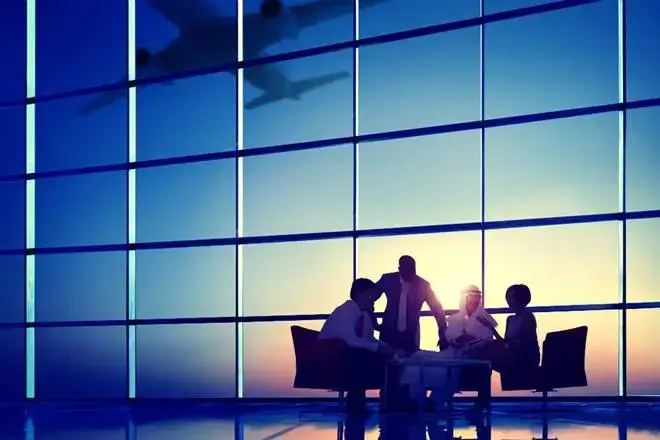
Business Travel Guide
What is mice travel everything you need to know in 2024.

MICE Travel is a term that is often used in the tourism industry, but not everyone is familiar with what it means. MICE stands for Meetings, Incentives, Conferences, and Exhibitions. It is a type of tourism that involves bringing together large groups of people for a specific purpose, such as attending a conference or participating in an exhibition.
MICE Travel is a growing segment of the tourism industry, and it is becoming increasingly popular among businesses and organizations. It is a way for companies to reward their employees, build relationships with clients, and showcase their products and services to a wider audience.
In this article, we will explore what MICE Travel is, why it is important, and what makes it different from other types of tourism. We will also look at some of the benefits and challenges of MICE Travel, as well as some examples of successful MICE events.
What is MICE Travel?
MICE travel is a type of tourism that involves corporate groups travelling with a specific purpose in mind. The acronym MICE stands for Meetings, Incentives, Conferences, and Exhibitions. MICE travellers are usually employees of a company or organization who travel to attend an event or meeting.
The Meetings aspect of MICE travel refers to business meetings, such as board meetings or sales meetings. These meetings can take place in various settings, such as hotels, serviced apartments , conference centres, or even on a cruise ship.
MICE travel is an important sector of the tourism industry , as it generates significant revenue for hotels, airlines, and other businesses. MICE travellers are often high-spending customers who require a high level of service and attention to detail.
Components of MICE Travel
Meetings are a key component of MICE travel. They are gatherings of people who come together to discuss a specific topic or issue. Meetings can be small or large, and they can take place in a variety of settings, including hotels, conference centres, and other venues.
Meetings can be classified into different types, such as board meetings, sales meetings, and team-building meetings. They can also be classified based on their duration, such as half-day, full-day, or multi-day meetings.
Incentives are rewards that are offered to individuals or groups to encourage them to achieve a certain goal or objective. In the context of MICE travel, incentives are used to motivate employees or business partners to achieve specific business goals.
Incentive travel programs can include a variety of activities, such as team-building exercises, cultural tours, and adventure activities. These programs are designed to provide participants with a unique and memorable experience that will motivate them to achieve their goals.
Conferences
Conferences are gatherings of people who come together to share information and ideas. They are typically organized around a specific theme or topic, and they can be attended by people from a variety of industries and backgrounds.
Conferences can take place in a variety of settings, such as hotels, conference centres, and other venues. They can be organized as single-track or multi-track events, and they can include keynote speakers, panel discussions, and workshops.
Exhibitions
Exhibitions are events where companies and organizations showcase their products and services to potential customers or clients. They are typically organized around a specific industry or theme, and they can be attended by people from a variety of backgrounds.
Exhibitions can take place in a variety of settings, such as convention centres, exhibition halls, and other venues. They can be organized as trade shows, consumer shows, or other types of events. Exhibitions can be an effective way for companies to generate leads and build relationships with potential customers or clients.
Importance of MICE Travel
MICE travel plays a crucial role in the tourism industry and has a significant impact on the economy. It is an essential part of the business tourism industry and encompasses four niche areas: Meetings, Incentive Travel, Conferences, and Exhibitions.
One of the key benefits of MICE travel is that it generates significant revenue through direct and indirect spending, contributing to local economic growth. It also creates job opportunities for people in the hospitality and tourism industry.
According to a report by Business Insider , the global MICE industry is expected to reach $1,439 billion by 2025, growing at a CAGR of 7.6% from 2018 to 2025.
MICE travel also fosters knowledge exchange, promotes collaboration and innovation, and provides a platform for networking. It enables professionals from different industries and countries to meet, share ideas, and learn from each other. This helps to build relationships and create new business opportunities.
In addition, MICE travel has a positive impact on the environment. Many MICE events incorporate sustainable practices, such as reducing waste, conserving energy, and promoting eco-friendly transportation.
This helps to minimize the environmental impact of the events and promotes sustainable tourism practices.
Overall, MICE travel is an essential part of the tourism industry and plays a vital role in driving economic growth, fostering knowledge exchange, promoting collaboration and innovation, and promoting sustainable tourism practices.
Economic Impact of MICE Travel
MICE tourism has a significant economic impact on the destinations where it takes place. The direct and indirect spending associated with MICE events generates revenue that contributes to local economic growth
According to a report by Grand View Research , the global MICE market was valued at USD 876.42 billion in 2022 and is expected to grow at a compound annual growth rate (CAGR) of 7.5% from 2023 to 2030.
One of the key benefits of MICE tourism is its contribution to job creation. A study by the World Tourism Organization found that MICE events create more jobs per tourist than leisure travel. This is because MICE events require a wide range of services, including accommodation , transportation, catering, and event management, which in turn creates employment opportunities in these sectors.
MICE tourism also has a positive impact on local businesses. Participants in MICE events tend to spend more money than leisure travellers, both because of the nature of their travel and because their expenses are often covered by their employers. This means that local businesses, such as restaurants, shops, and attractions, benefit from the increased spending associated with MICE events.
Overall, the economic impact of MICE tourism is significant, with direct and indirect spending contributing to local economic growth and job creation. The benefits of MICE tourism extend beyond the event itself, with local businesses and the wider community benefiting from increased spending.
Key Players in the MICE Industry
MICE tourism is a complex industry that involves various stakeholders. The following are the key players in the MICE industry:
Event Planners
Event planners are professionals who help businesses and organizations plan and execute events, such as meetings, conferences, and exhibitions. They are responsible for managing all aspects of the event, including venue selection, catering, logistics, and marketing. Event planners work closely with their clients to ensure that the event meets their objectives and budget.
Destination Management Companies
Destination Management Companies (DMCs) are professional service providers that specialize in managing events and travel arrangements in a specific destination. They have in-depth knowledge of the local market and can provide valuable insights into the destination’s culture, customs, and regulations. DMCs work closely with event planners and travel agencies to ensure that the event runs smoothly.
Hospitality Providers
Hospitality providers include hotels, resorts, and other accommodation providers that offer facilities and services for MICE travellers. They provide meeting rooms, conference facilities, and other amenities that are essential for MICE events. Hospitality providers work closely with event planners and DMCs to ensure that the accommodation meets the needs of MICE travellers.
Travel Agencies
Travel agencies are professional service providers that specialize in arranging travel and accommodation for MICE travellers. They work closely with event planners and DMCs to ensure that the travel arrangements meet the needs of MICE travellers. Travel agencies can provide valuable insights into the destination’s transportation options, visa requirements, and other travel-related issues.
4 Best MICE Travel Destinations
MICE travel is an important segment of the tourism industry, and many destinations around the world have recognized its potential for generating significant revenue. Some of the most popular MICE travel destinations include:
1. Singapore
Singapore is one of the most popular MICE destinations in Asia. The city-state is known for its world-class infrastructure, modern facilities, and excellent connectivity.
It also has a diverse range of accommodation options, from budget-friendly to luxury hotels.
Some of the most popular MICE venues in Singapore include the Marina Bay Sands, Suntec Singapore Convention & Exhibition Centre, and Resorts World Sentosa.
2. Barcelona
Barcelona is a popular MICE destination in Europe, thanks to its rich history, vibrant culture, and excellent infrastructure.
The city has a range of venues suitable for MICE events, including the Fira Barcelona Gran Via, the Palau de Congressos de Catalunya, and the Centre de Convencions Internacional de Barcelona.
Barcelona is also known for its excellent cuisine, art, and architecture, making it an attractive destination for both business and leisure travellers.
Dubai has emerged as a leading MICE destination in the Middle East, thanks to its modern infrastructure, world-class facilities, and excellent connectivity.
The city has a range of venues suitable for MICE events, including the Dubai World Trade Centre, the Dubai International Convention and Exhibition Centre, and the Madinat Jumeirah Conference Centre.
Dubai is also known for its luxury shopping, dining, and entertainment options, making it an attractive destination for both business and leisure travellers.
4. Las Vegas
Las Vegas is one of the most popular MICE destinations in the United States, thanks to its world-class facilities, entertainment options, and excellent connectivity.
The city has a range of venues suitable for MICE events, including the Las Vegas Convention Center, the Sands Expo and Convention Center, and the Mandalay Bay Convention Center.
Las Vegas is also known for its luxury hotels, casinos, and nightlife, making it an attractive destination for both business and leisure travellers.
Top Trends in MICE Travel
Here are some of the top trends include:
- Technology Integration
Technology is an integral part of MICE travel, and it is being used to enhance the experience of attendees. Event organizers are utilizing technology to create interactive and engaging experiences that leave a lasting impression on attendees.
Some of the technologies being used include virtual reality, augmented reality, and live streaming.
- Sustainability
Sustainability is becoming increasingly important in the MICE travel industry. Event organizers are looking for ways to reduce the environmental impact of their events, and many are implementing sustainable practices such as using biodegradable products, reducing waste, and using renewable energy sources.
- Personalization
Personalization is another trend that is gaining popularity in the MICE travel industry. Attendees are looking for personalized experiences that cater to their individual needs and preferences. Event organizers are utilizing data analytics and other technologies to create customized experiences that meet the unique needs of each attendee.
- Hybrid Events
Hybrid events are becoming more common in the MICE travel industry. These events combine in-person and virtual elements to create a more engaging and interactive experience for attendees. Hybrid events allow businesses to reach a wider audience while still providing the benefits of face-to-face interaction.
Wellness is another trend that is gaining popularity in the MICE travel industry. Attendees are looking for ways to stay healthy and fit while attending events and meetings. Event organizers are incorporating wellness activities such as yoga, meditation, and healthy food options into their events to promote a healthy lifestyle.
Challenges Facing MICE Travel
MICE Travel has its own set of challenges that need to be addressed to ensure the success of events. Here are some of the key challenges that MICE Travel faces:
- Logistics and Planning
MICE Travel involves the organization of large-scale events, which require meticulous planning and coordination. Event planners need to ensure that all aspects of the event, such as transportation, accommodation, and catering, are well-organized and meet the expectations of the attendees.
- Budget Constraints
MICE Travel can be expensive, and budget constraints can be a significant challenge for event planners. The cost of organizing an event can quickly add up, and planners need to ensure that they stay within budget while still providing a high-quality experience for attendees.
- Safety and Security
Ensuring the safety and security of attendees is a crucial aspect of MICE Travel. Event planners need to take measures to ensure that attendees are safe and secure during the event, such as providing adequate security personnel and implementing emergency response plans.
- Technology and Innovation
MICE Travel is an ever-evolving industry, and event planners need to keep up with the latest technology and innovation to provide a unique and memorable experience for attendees. The use of technology, such as virtual reality and augmented reality, can enhance the attendee experience, but it can also be a challenge for event planners to implement and integrate into the event.
Sustainability in MICE Travel
Sustainability is a growing concern in the MICE industry as it has a significant environmental impact. MICE travel can generate a large amount of waste, energy consumption, and carbon emissions, which can contribute to climate change and harm the environment.
Therefore, there is a growing demand for sustainable practices in the MICE industry to reduce its negative impact on the environment.
One of the ways to promote sustainability in MICE travel is by reducing waste. Event organizers can reduce waste by using reusable or recyclable materials, avoiding single-use plastics, and encouraging attendees to bring their water bottles and refill them instead of buying bottled water. They can also donate leftover food to charities or food banks instead of throwing it away.
Another way to promote sustainability in MICE travel is by reducing energy consumption. Event organizers can reduce energy consumption by using energy-efficient lighting and equipment, turning off equipment when not in use, and using renewable energy sources such as solar.
They can also encourage attendees to use public transportation or carpool instead of driving alone to reduce carbon emissions.
Furthermore, promoting sustainability in MICE travel can also have economic benefits. Sustainable events can attract environmentally conscious attendees and sponsors, which can increase the event’s visibility and reputation.
Additionally, reducing waste and energy consumption can also lead to cost savings for event organizers.
How do incentives function within the MICE sector?
Incentives are an important part of the MICE sector because they provide a way for companies to reward their employees or customers. Incentive travel is often used as a way to motivate employees to achieve specific goals or to reward them for their hard work. Incentives can also be used to build relationships with customers by offering them exclusive experiences or rewards.
What are some typical examples of MICE tourism?
MICE tourism includes a wide range of events, from small meetings to large-scale conferences and exhibitions. Some examples of MICE tourism include trade shows, product launches, corporate meetings, and incentive trips. These events can take place in a variety of locations, from convention centres to hotels and resorts.
Why is the MICE industry considered important for hospitality and tourism?
The MICE industry is an important part of the hospitality and tourism sector because it generates significant revenue for businesses and local economies. MICE events bring in large numbers of visitors who spend money on transportation, accommodations, food, and entertainment. Additionally, MICE events can help to promote a destination and attract future visitors.
What types of events are categorized under MICE travel?
MICE travel encompasses a wide range of events, including corporate meetings, conferences, exhibitions, trade shows, and incentive trips. These events can be held for a variety of purposes, such as networking, education, or product launches.
Read more Business Travel Guide articles
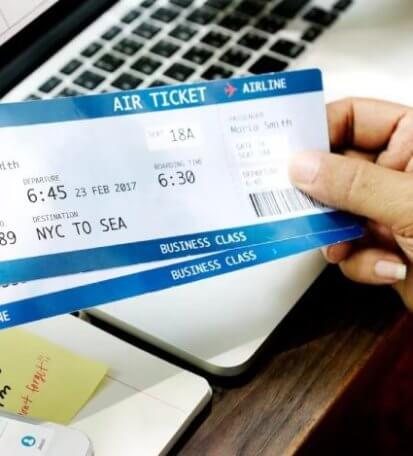
Open Flight Ticket: Everything You Need to Know

Different Types of Business Travel and Accommodation
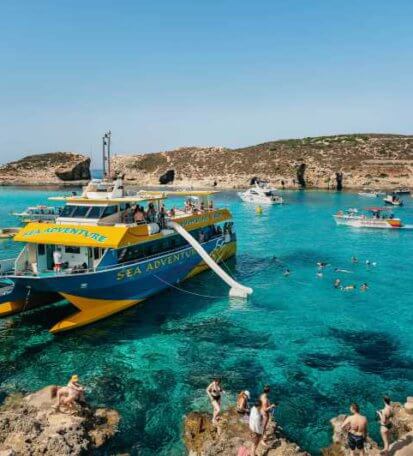
Comino Island Malta Best Eco-Friendly Travel Tips

Understanding Flight ID Requirements for Business Travel in 2024

IMAGES
VIDEO
COMMENTS
Origin of the MICE industry. Although there is not much information on the history of this sector, the first historical approach or origin of the MICE industry in Europe took place in 1814 when the Congress of Vienna was celebrated, as well as many other meetings on political, religious and cultural issues. However, much of the story begins in ...
MICE tourism. Meetings, incentives, conferences and exhibitions tourism (MICE tourism) is a type of tourism in which large groups, usually planned well in advance, are brought together. Recently there has been an industry trend toward using the term "meetings industry" to avoid confusion from the acronym. [1]
Origins: Europe vs America. In Europe, the history of MICE began in the 19th century, when industrial revolutions and economic developments increased the need for business travel and meetings. At ...
The Benefits of MICE Tourism. MICE tourism offers a wide range of benefits for various stakeholders, including cities, businesses, and individuals. Here is a closer look at the key benefits: For cities: Economic impact: MICE tourism generates significant revenue through direct and indirect spending, contributing to local economic growth and ...
Abstract. The Meetings, Incentives, Conventions and Exhibitions (MICE) sector of tourism is rapidly expanding worldwide. This paper discusses some neglected issues relating to the assessment of the narrower economic impacts, the economy-wide impacts and the net benefits of an expanding MICE sector within a tourism destination.
The region's diverse cultural experiences and hospitality also add to its appeal as a MICE destination.The MICE industry, an acronym for Meetings, Incentives, Conferences, and Exhibitions, is a ...
The meetings, incentives, conferences, and Exhibitions (MICE) tourism has intensively grown in recent decades. The MICE sector has also been strongly affected by social and technological changes, especially new social habits resulting from the COVID-19 pandemic. Our research maps the state of the art in MICE tourism and its digitalization from 1997 (first published article found on the subject ...
in Kelantan. The results of this study will be useful for examining the important factors in the. development of MICE tourism from hotel perspectives. Keywords: MICE , Tourism ,East Coast Region ...
Looking at that, it's easy to understand that MICE is a strong and inseparable intersection of the Tourism and Events industry. Large groups always traveled on business. Secondly, in modern times, DMO's (Destination Marketing Organizations) and DMC's (Destination Management Companies) proved the power of MICE tourism.
This publication brings together the theoretical background of MICE tourism as well as best practice examples from around the Asia Pacific Region. Together these show how MICE tourism can bring benefits beyond profits and short term jobs to include adding competitive advantage to destinations, diversifying source markets and engaging both hosts ...
Putting the nice into MICE. Nothing to do with pest control, everything to do with business-minded travel. Put simply, MICE stands for Meetings, Incentives, Conferences & Exhibitions. It is business tourism at its finest, aimed at bringing together top professionals from every sector in an enhanced, tailor-made hospitality setting.
The future for MICE tourism. The MICE industry size was valued at $805 billion in 2017 and was expected to grow at a CAGR of 7.6% to reach $1,439.3 billion by 2025. However, COVID has had a drastic impact on this and this growth is expected to slow or even decline as a result.
The paper identifies a series of patterns of action over the last 50 years in the unique and successful MICE tourism development model of this city-state. These have included interventionism, public-private collaboration, long-term planning, and innovation. By using the Singaporean MICE sector as a case study, the paper also provides valuable ...
In the wake of a challenging few years, MICE tourism is finally seeing its circumstances change. According to a report by Spain Convention Bureau and Braintrust (2022), the industry could reach 100% of its pre-pandemic activity in 2024. In 2019, the MICE industry in Spain reached 12.314 million euros. In 2020, this dropped by 75% and in 2021 we ...
MICE Industry - An Asia-Pacific Perspective. In Asia and the Pacific, one of the fastest developing regions in the world, MICE industry development can be a key driver of economic growth, regional cooperation and intellectual development. This publication brings together the theoretical background of MICE tourism as well as best practice ...
Abstract. MICE tourism is a segment of the tourism industry that, due to its singularity, requires specific attention. This article offers a holistic approach to the channel of distribution of MICE tourism and targets two main objectives: (1) the proposal of a conceptual framework that depicts all stakeholders, flows of action and possibilities of intermediation-disintermediation and (2) a ...
MICE (meeting, incentive, conference, and exhibition) industry shows a great potential in the demand side and interacts with the supply side of tourism industry. The optimization of driving MICE into tourism strategy is an important issue in Chinese tourism industry development, which is an effective choice to stimulate tourism industry innovation. This paper aims to explore an effective ...
The abbreviation, MICE, is defined as the combination of Meetings, Incentive Travel , Conferences , and Exhibition. It is a new trend that describes an emerging industry of the travel and tourism industry , more especially in the event industry (Schlentrich 2008 ). MICE Industry is an organized category of tourism where a large number of people ...
megacities aimed at intensive development have a chance for the development of business tourism. During the pandemic, the MICE tourism industry has undergone significant changes. Closing. borders ...
MICE tourism had become a significant development tool for local economies before the COVID-19 outbreak. An effective destination brand is one way in which MICE stakeholders can work together to redesign and rebrand MICE tourism in the post-pandemic times. This study argues that heritage resources at a MICE destination add to the attractiveness of the business destination brand.
Amid international travel restrictions, social-distancing protocols and prohibitions on mass gatherings in response to the Covid-19 pandemic, the world's meetings, incentives, conferences and exhibitions (MICE) segment has been forced to adapt, with some events shifting online and others being deferred. Before the outbreak of the virus, MICE presented a promising growth avenue for emerging ...
Further, transformation within MICE tourism has been a central focus in rebuilding tourism post-COVID-19. The current study illustrates both the short-term and long-term tourism policy and strategy responses, which had moved from mitigation to resilience building. Keywords: MICE tourism, policy responses, COVID-19, South Africa Introduction
MICE travel is a type of tourism that involves corporate groups travelling with a specific purpose in mind. The acronym MICE stands for Meetings, Incentives, Conferences, and Exhibitions. MICE travellers are usually employees of a company or organization who travel to attend an event or meeting. The Meetings aspect of MICE travel refers to ...